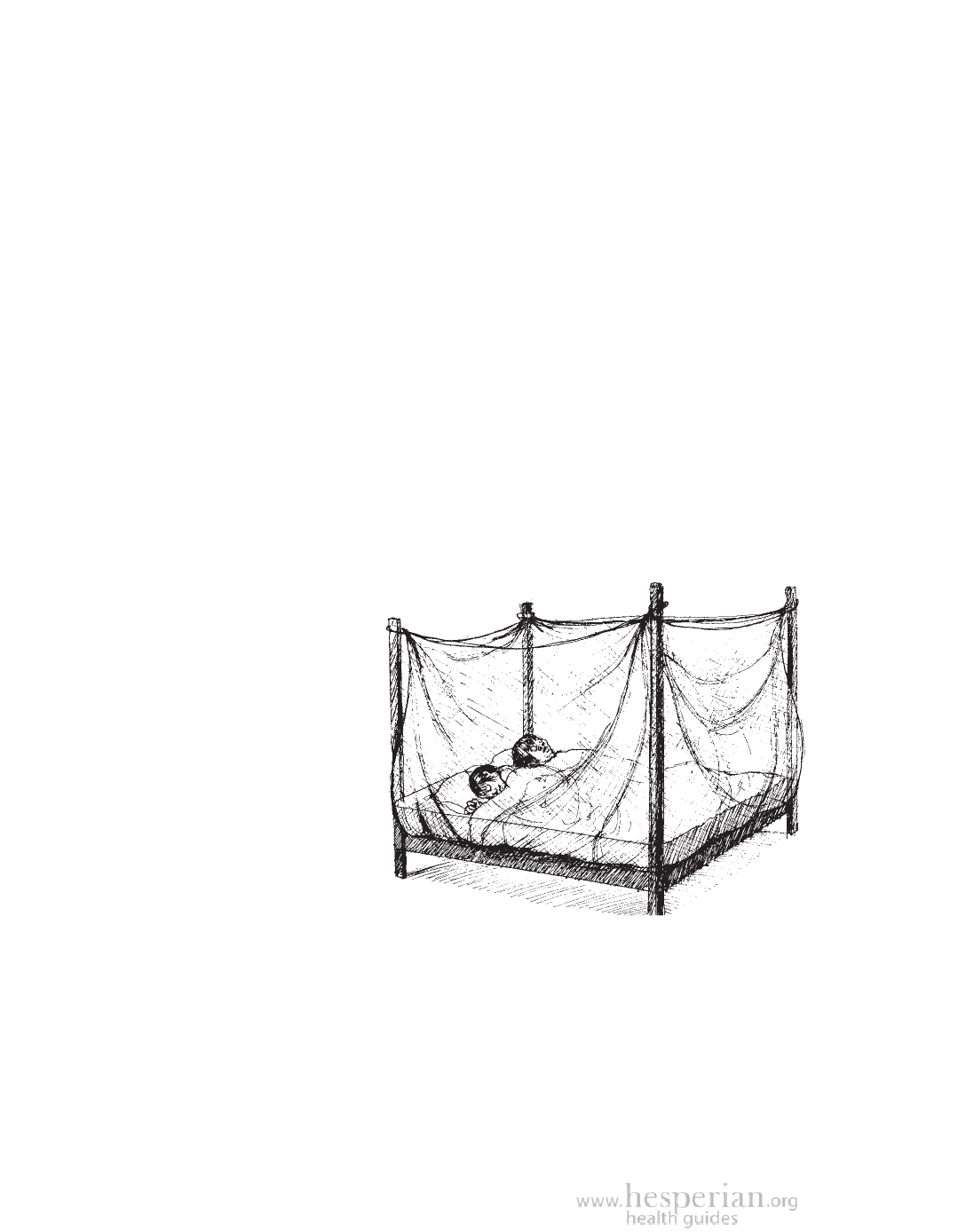
146 Health Problems from Mosquitoes
Prevention
Malaria occurs most often during hot, rainy seasons because the mosquitoes
that carry it breed in warm, stagnant water. But in some areas of the world,
malaria is also found in the dry season, when mosquitoes find breeding sites in
small standing pools of water. As with dengue and yellow fever, the best way to
prevent malaria is to avoid mosquito bites (see page 143) and to use community
mosquito control (see pages 149 to 153).
Sleeping under an insecticide-treated bednet is a good way to prevent
and control malaria. These bednets are treated with an insecticide called
“pyrethrins,” which is relatively safe, especially compared to getting malaria.
The greatest dangers from insecticide-treated bednets are when they are
dipped in the insecticide (leading to exposure through the skin), when children
suck or chew on them (leading to exposure through swallowing), and when
they are washed (because the insecticide can poison water sources and harm
fish, insects, animals, and people downstream).
Bednets only protect if any holes or tears are quickly repaired. Also, the
insecticide on the bednet wears off after 6 to 12 months, or sooner if it is often
washed. In some places, you can now get “long-lasting” treated mosquito nets
that work for over a year. If the bednet is still in good condition,
new pesticide can be mixed
and applied, but if the
bednet has many rips or
tears it may be safer to
replace it. When reapplying
pesticide, wear gloves and
pay careful attention to
the directions.
Malaria mosquitoes
bite at night.
To prevent malaria,
sleep under an
insecticide-treated
bednet.
Treatment for all
Malaria is most common among poor people, and the number of deaths is
growing each year. When people cannot afford blood tests and medicines
and do not have access to health services, they are forced to live and die with
this disease. And as long as one person has malaria, the infection can spread
to others.
Malaria occurs most often in communities suffering from poverty and social
injustice. For prevention campaigns to be successful, they must address the root
causes of poverty and injustice as well as making treatment available for all.
A Community Guide to Environmental Health 2012